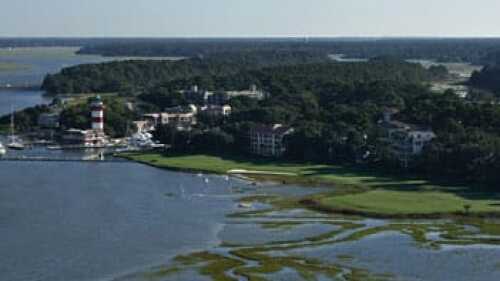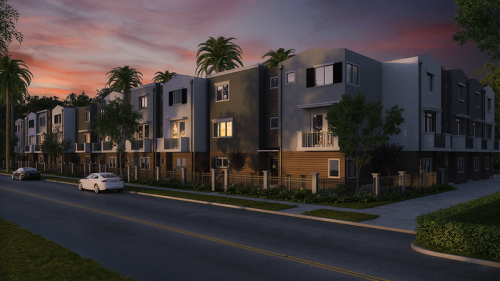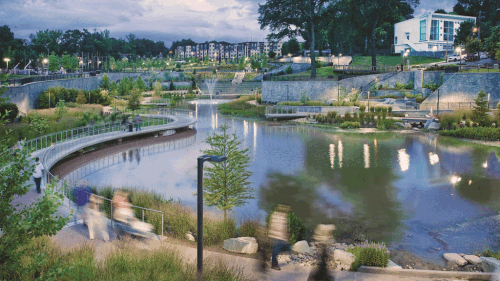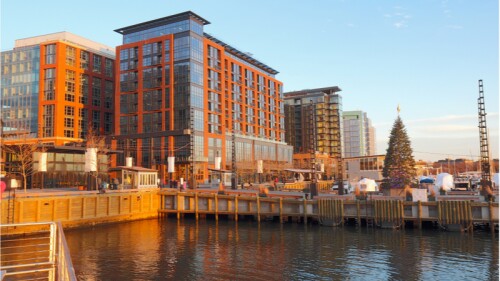Property Types
Hotels and Resorts
The Sea Pines Resort in South Carolina, which received the ULI Heritage Award in 1995, has influenced planned communities and the way projects work to balance nature and development
Six members of ULI’s Recreational Development Council discuss what is affecting their market, including the prospects for the resort and vacation home industry in an uncertain economy, the mind-set of potential buyers, the changing nature of second-home products, and strategies for navigating the challenges ahead.
With hotel performance wavering nationwide and new FDIC regulations setting strict capital requirements for lenders, developers are having trouble locating funding for proposed projects.
Industrial
The global industrial market is poised for big changes as companies reexamine their supply chain operations, says ULI trustee James J. Curtis III. Labor arbitrage, rising manufacturing costs, and a much greater sensitivity to sustainability are among those factors that will drive the industrial market in the future, he adds. Read what other experts predict for the industrial market going forward.
The April/May Federal Reserve senior loan officer opinion survey notes that both credit standards and loan terms to commercial and industrial (C & I) borrowers continued to ease with the percentage of domestic banks tightening C & I lending standards continuing to moderate (with fewer banks reporting tightening standards). Are commercial banks showing an increasing willingness to extend credit to both small and large business and household borrowers?
The FTSE/NAREIT Equity REIT (real estate investment trust) Index was up 5.11 percent in April, up 13.00 percent through April 30th, and pays a 3.29 percent dividend, too. All 13 property sector sub-indices were positive in April, ranging from the leaders—office/industrial (+7.38 percent), regional malls (+7.15 percent), and diversified (+6.91 percent)—to the laggards—industrial (+2.13 percent), timber (+2.29 percent), and freestanding retail (+2.95 percent). Read about the year-to-date basis leaders and laggards.
Mixed-Use
Les Docks Village is a ground-floor rehabilitation of the Docks, a historic and emblematic structure built in 1857 on the Marseille harbor and purchased by J.P. Morgan in 2007.
The Peterson Companies’ new National Harbor complex development attracts 10 million people each year, but it is likely that few will notice all the measures Peterson has put in place for their protection, which are both well concealed and elaborate.
Congress has thrown its support behind new legislation that aims to fix some of the problems in the condo financing program of the Federal Housing Administration (FHA). The Housing Opportunity through Modernization Act (H.R. 3700) will loosen some of the more stringent regulatory requirements specific to condo mortgage insurance that were introduced in the wake of the housing finance crisis.
Multifamily
Nationwide, the urgent need for more affordable housing has become crystal clear. The United States is grappling with a housing crisis, and building affordable housing has become increasingly difficult. Developers face high construction costs, ongoing supply chain issues, and skyrocketing prices for land, especially in some of the country’s largest cities. Even when a project comes together and gets financing, the process to obtain permitting, gain city approvals, and actually construct a project can take years.
City is actively working to make its neighborhoods safer and more resilient to extreme rain events
New Yorkers have gotten used to watching the sun set behind the piers and towers of Jersey City, the major metropolis of New Jersey’s so-called Gold Coast. But for many years, Jersey City’s glittering line of luxury apartments and office blocks stopped at the water’s edge. Tucked behind modern high-rises, the rest of the city was a patchwork of charming historic districts, aging apartment buildings, public housing, and contaminated, abandoned industrial sites.
Office
ULI MEMBER–ONLY CONTENT: Speaking at the 2021 ULI Fall Meeting, panelists discussed recent transactions in the office sector and which segments had performed the best.
The economic recovery in Washington, D.C., continued through the close of the third quarter of 2021. Office leasing activity is ongoing, though at a slower pace than years past, while asking rents are rising (up 2.1 percent from 2020 according to Newmark). The overall D.C. vacancy rate is just over 18 percent, according to CBRE.
This morning in Chicago’s South Loop, ULI members were treated to a tour of two historic and iconic buildings that have recently undergone major redevelopment and renovation: The Willis Tower and the Old Post Office.
Residental
Housing affordability has become one of the most talked-about land use issues in virtually every major urban center in North America. Less focus has been directed to the lack of affordable housing options in small towns and rural areas, despite a significant need that spans the demographic spectrum.
Addressing the lack of affordable housing for the middle class is one of the biggest opportunities—and sources of frustration—for homebuilders, according to a panel of industry executives speaking during the 2018 ULI Fall Meeting in Boston.
The city of Dallas’s first-ever comprehensive housing policy is drawing significant interest from real estate professionals, but building affordable housing in one of the nation’s most income-segregated cities remains a significant challenge. A group of housing experts gathered in September to discuss the policy and affordable housing opportunities at an event hosted by ULI North Texas.
Retail
For decades, civic leaders have tried to revitalize Market Street, San Francisco’s central thoroughfare, only to see their efforts founder. “I sometimes call it the great white whale of San Francisco,” says Eric Tao, managing partner at L37 Development in San Francisco and co-chair of ULI San Francisco. “Every new mayor, every new planning director, every new economic development director has chased that white whale.” This year, however, an international competition of ideas hosted and run by ULI San Francisco, with support from the ULI Foundation, generated fresh momentum for reimagining the boulevard. The competition drew 173 submissions from nine countries and sparked new conversations about the future of downtown San Francisco.
The OAK project began in 2009, when a development firm set their sights on the corner of Northwest Expressway and North Pennsylvania Avenue, the state’s most important and busiest retail intersection. As the region’s only parcel capable of supporting a vertically integrated project of this scale and density, that land represented an opportunity to create something truly special.
As aging retail continue to evolve, one increasingly popular trend has been to redesign malls as town centers—recalling a time when such commercial districts were the heart and soul of a community. Mall–to–town center retrofits are emerging throughout the nation, especially in suburban communities, where pedestrian-friendly, mixed-use environments are highly attractive to millennials now raising families.
















